Chakra Yoga: How To Align Your Chakras With Yoga Poses
The post Chakra Yoga: How To Align Your Chakras With Yoga Poses appeared first on The Yoga Nomads.
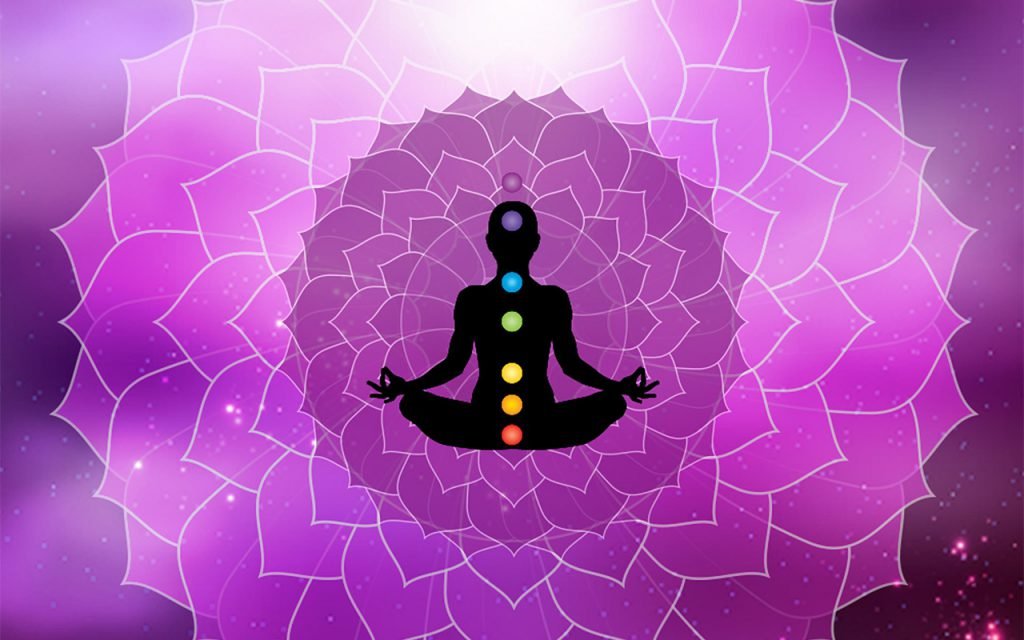
Have you ever been in a yoga class and heard the teacher say, “this pose is good for opening the chakras?” If so, you may have wondered what the chakras actually are and how they relate to yoga.
Chakras are a key part of yoga philosophy, mentioned in ancient yogic texts like the Vedas and the Upanishads. So, as a yoga practitioner, understanding the energetic system known as the chakras can be beneficial for deepening your practice and healing your body. Let’s discuss the link between chakras and yoga and how chakra yoga works.
What are the chakras?
According to yogic tradition, every human being has seven major energetic centers (chakras) that run up the spine from the tailbone to the top of the head. Chakra is a Sanskrit word that means “wheel,” as the energy in these centers is said to turn as a wheel does.
Each chakra is responsible for one of the various bodily systems and plays a specific role in our physical, mental, and emotional health. If a chakra is blocked, we may experience negative emotions, self-sabotaging thoughts, and physical symptoms through pain or disease. However, if our chakras are aligned, it is said that we will experience vitality and harmony.
The chakra system is part of the subtle body, meaning you cannot see it. It is also impossible to detect on modern-day scientific and medical devices, and as a result, the existence of the chakra system cannot be scientifically proven. However, thanks to the ancient yogic teachings (both written and verbal), we know a great deal about the subtle body and its role in our lives.

How does yoga help to balance chakras?
Although a blocked chakra can become detrimental to our wellbeing, there are several ways to rebalance or unblock it. The practice of yoga is seen as one of the best chakra healing tools as yoga poses, breathing techniques (pranayama), and meditation can all help.
Practicing yoga poses is an excellent way to move energy around the entire body and break up stagnation, so regular practice will keep the subtle body in good condition. However, it is believed that specific hatha yoga postures can have healing effects on particular chakras.
In general, asanas that stretch or compress the physical location of an energy center are best. For example, backbends can open a closed heart chakra, core work can release energy blocks in the Manipura chakra, and hip openers help the sacral chakra. Some poses also target multiple chakras, such as Baddha Konasana, a seated hip opener good for both the root and sacral chakras.
Each of the seven chakras has several yoga poses that target it. This allows you to either focus your yoga practice on one chakra to heal specific symptoms in the emotional or physical body. Alternatively, you can combine a few postures of each energy center to balance and align them all.
Below we will share the most beneficial chakra yoga postures for each of the seven major chakras.
Root chakra yoga poses
The root chakra, known as Muladhara in Sanskrit, is the first of the seven chakras, located at the tailbone, the base of the spine. The root chakra has a highly grounding and earthy energy and is associated with the qualities of stability, security, and safety.
If one of our core needs, such as shelter or food, is not met, the root chakra may become blocked. As a result, we may struggle to complete basic tasks and expect bad things to happen. However, if the first chakra is balanced, we will feel safe and secure in ourselves and the world. In addition, we will experience a sense of knowing who we are and what our purpose is.
The Muladhara chakra is associated with the bottom of the feet and elimination organs, like the bladder and rectum. Thus, grounding yoga postures that connect your physical body to the earth are best to balance the root chakra.
Malasana (Garland Pose) – This grounding positive increases blood flow and circulation in the pelvic area, drawing energy downwards. Tadasana (Mountain Pose) – The primary focus of this familiar yoga pose is to feel your connection to the earth. You feel grounded and connected as you press all four corners of your feet into the ground and engage your thighs. Vrikshasana (Tree pose) – Like in mountain pose, this standing balance calls for a stable foundation. You need to firmly press your foot down to center your weight and create stability, grounding yourself into the earth like a tree. Adho Mukha Svanasana (Downward Facing Dog) – Both feet and hands firmly press into the earth, creating a solid and stable foundation. Janu Sirsasana (Head-to-Knee Forward Bend) – Here, the back of your legs are connected to the earth as you lower your body towards your legs. It can relieve tension in the lower spine and root chakra area.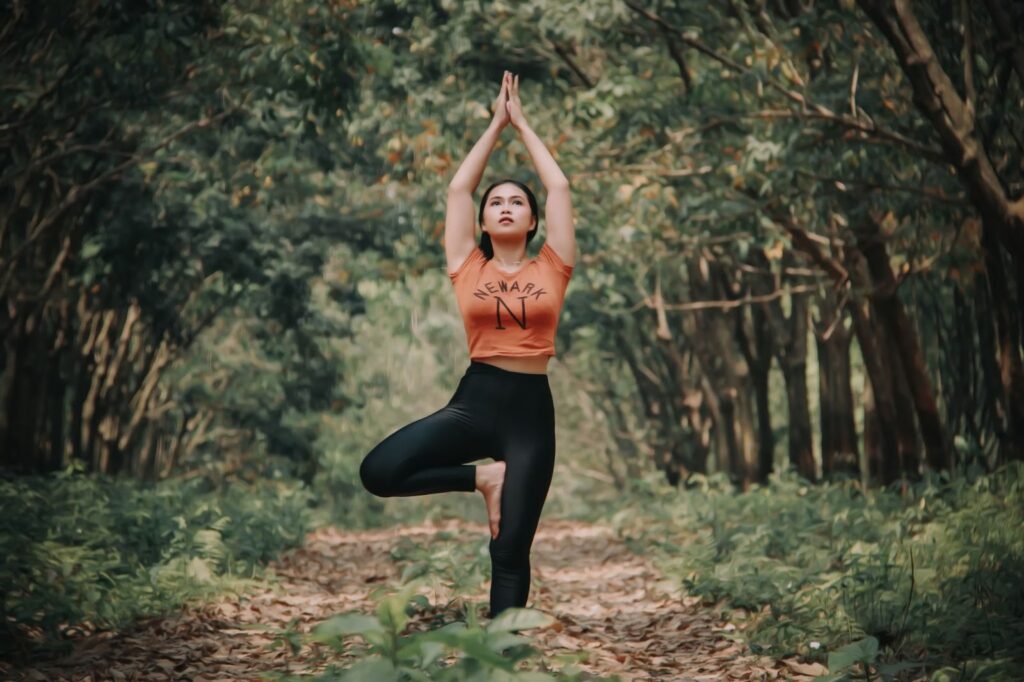
Sacral chakra yoga poses
The sacral chakra (Svadhishthana in Sanskrit) is located in the lower belly near the reproductive organs. This energetic center governs our emotions, sexual needs, creativity, and ability to feel pleasure. The second chakra shares the flow-like energy of water and determines how well we can go with the ebbs and flows of life.
If the sacral chakra is open, you’ll be able to regulate your emotions, tap into your creative potential, and feel pleasure. However, if it is closed, you may feel emotionally unstable, experience a low sex drive, and lack passion for life.
The third chakra is associated with the reproductive system and the kidneys. Yoga poses targeting the pelvic region and hips, either opening or strengthening them, can help open this energy center.
Anjaneyasana (Crescent pose) – Lunges are one of the best hip-opening poses that strengthen and stretch the sacral chakra region.Upavistha Konasana (Wide-Angle Seated Forward Fold) – This pose opens the hips and helps ease lower back pain, a common physical symptom of a blocked sacral chakra.Baddha Konasana (Bound Angle Pose) – This pose has similar effects as Upavistha Konasana, stimulating energy in the pelvic region and relieving backache. Eka Pada Rajakapotasana (Pigeon Pose) – This is the best asana for releasing emotional blockages held in the second chakra. The challenging posture tests your emotional capacity and can release stagnated energy in the area of the sexual organs.Utkata Konasana (Goddess Pose) – Here, you open and stretch the hips and inner groin while strengthening the quads, glutes, and cores, directing energy to the sacral chakra region.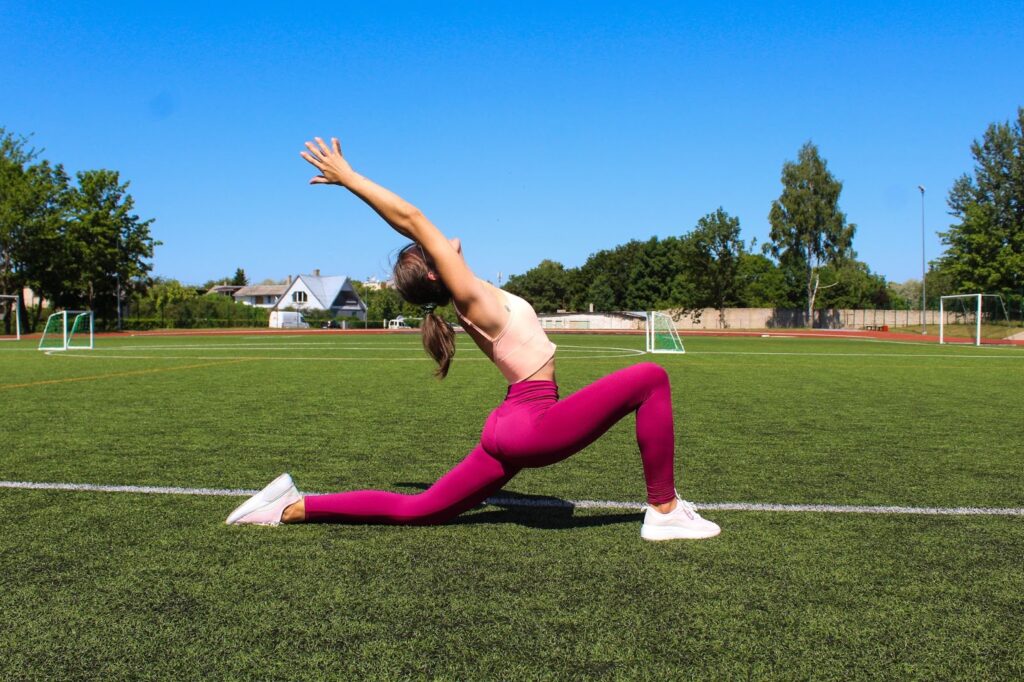
Solar Plexus chakra yoga poses
The solar plexus chakra sits in the upper abdomen, above the belly button, and is the center of our personal power. It governs our self-belief, confidence, determination, and ability to take action.
When open, the solar plexus chakra helps us tap into the courage and resilience we need to follow our dreams. However, if the Manipura energy is weak, you may battle a negative self-image, give up quickly, and hold yourself back due to fear of failure or judgment.
The solar plexus chakra has fiery energy governing the digestive organs. It is stimulated when the abdominal organs are compressed. Therefore, postures stretching or engaging the core are best for solar plexus chakra healing.
Navasana (Boat Pose) – This is the king solar plexus chakra pose as it requires strong core engagement. As well as strengthening the front of the energy center, it toughens the back muscles behind the abdomen, bringing intense, fiery energy to this region.Phalakasana (Plank Pose) – Plank is another challenging asana that works the core region and the spine. It also builds heat, increasing the fire element within the body.Bow Pose (Dhanurasana) – The bow pose targets the solar plexus chakra by compressing and stretching the abdominal muscles and strengthening the back.Apanasana (Knees to chest) – By hugging the knees in toward the heart, you compress the stomach and stimulate digestion.Virabhadrasana II (Warrior 2) – This standing posture creates fiery energy and boosts confidence, one of the main qualities of the Manipura chakra. It also calls for an engaged navel center, stimulating the abdominal muscles.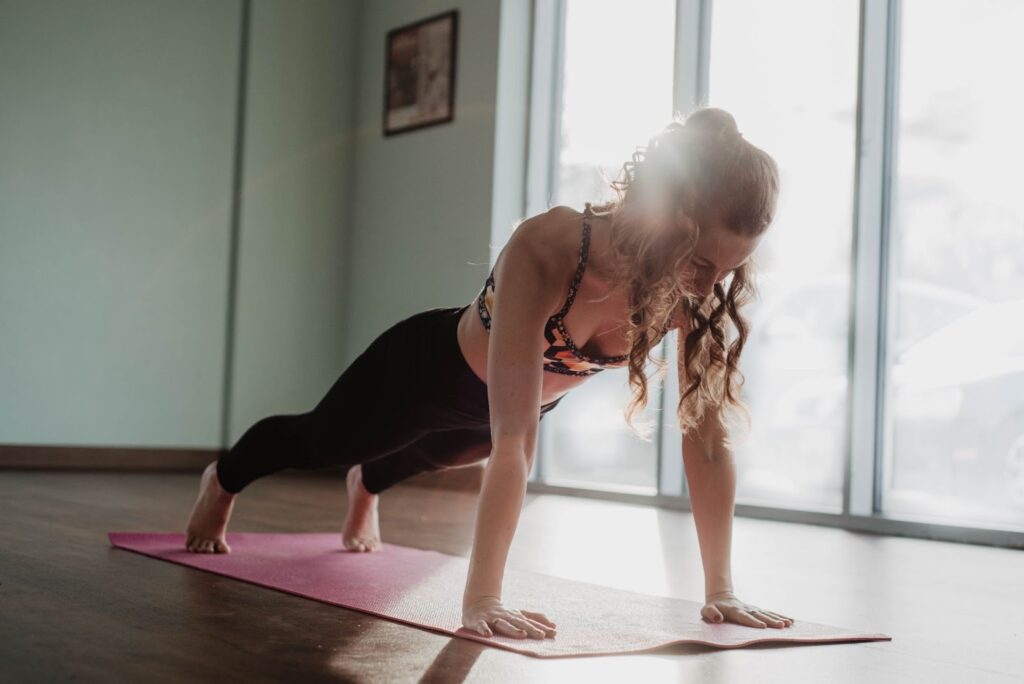
Heart chakra yoga poses
The heart chakra (Anahata) is located in the center of the chest and is associated with love, compassion, gratitude, and joy.
An open heart chakra allows you to freely give and receive unconditional love, notice the beauty in the world, and forgive and sympathize with others. However, a closed fourth chakra will cause you to hold onto grudges, struggle to feel compassion and gratitude, and experience difficulty feeling and showing love and joy.
The Anahata chakra is associated with our heart health and the thymus gland, situated in the middle of the chest. In addition, it is linked to the lungs, arms, and hands. Typically, yoga poses that open the heart center and the shoulders, such as backbends, best stimulate this energy center.
Ustrasana (Camel Pose) – This deep backbend stretches the entire front of the body, opening the heart center and the shoulders. Plus, if you tilt your head back, it also targets the throat chakra. Urdhva Dhanurasana (Wheel Pose) – This challenging position requires a lot, such as solid shoulders and spinal flexibility. However, once you master it, you’ll immediately feel the heart-opening benefits. Urdhva Mukha Svanasana (Upward-Facing Dog) – This familiar pose improves flexibility in the spine, stretches the chest, and strengthens the back. Pull the shoulders down away from the ears and press the chest forward to get the most from it. Purvottasana (Upward Plank) – The reverse plank stretches the chest while strengthening the arms and wrists as you press your hands firmly into the earth for support.Natarajasana (Dancers Pose) – This graceful balancing posture opens the heart, promoting joy and love.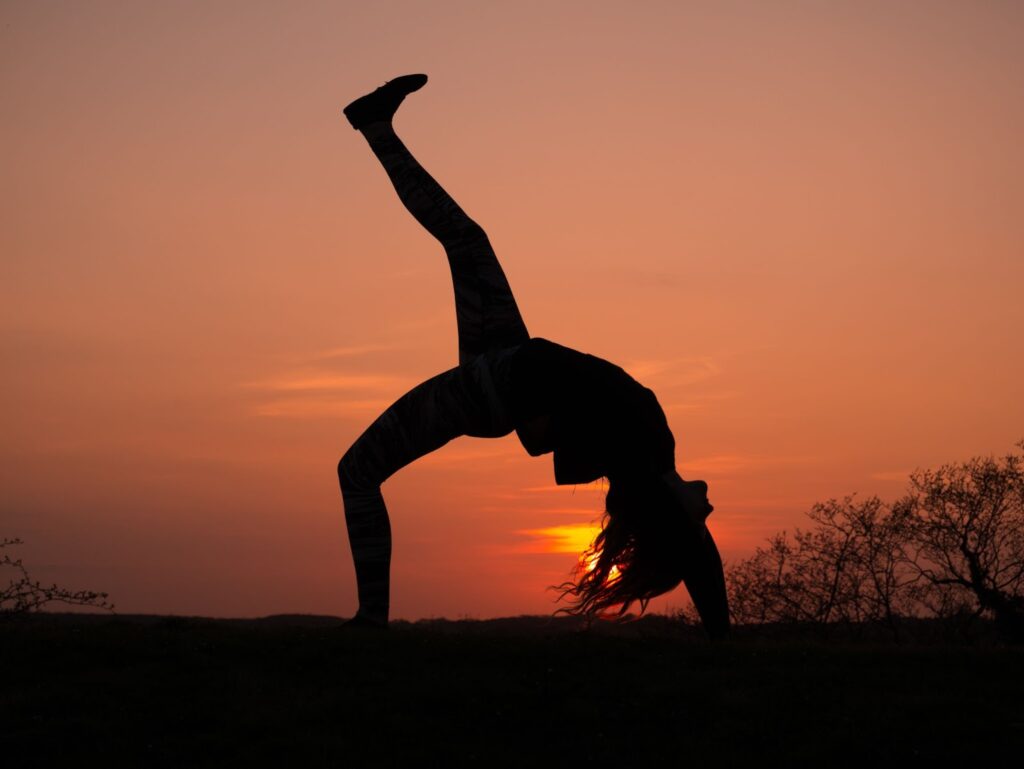
Throat chakra yoga poses
The throat chakra, Vishuddha in Sanskrit, is located at the base of the throat, the center of the larynx. It governs our communication and self-expression. The Vishuddha chakra regulates the thyroid gland and is associated with the organs in the throat, the mouth, teeth, and gums.
An open throat chakra allows you to speak your truth without fear, articulate yourself well, and express your creative ideas. However, a blocked fifth chakra will result in fear of expressing yourself, the inability to ask for what you want, and difficulty listening to others.
If you want to work on the Vishuddha chakra in your yoga practice, try poses stretching or compressing the throat center. Generally, you should focus on opening postures for a blocked throat chakra and compressing poses for an overactive center.
Matsyasana (Fish Pose) – This pose deeply stretches and opens the throat, breaking up any blocked or stagnated energy. Setu Bandhasana (Bridge Pose) – This gentle backbend stretches the back of the neck and compresses the front of the throat, directing energy here.Sarvangasana (Shoulder Stand) – This inversion intensely compresses the throat, beneficial for those with an overactive throat chakra.Simhasana (Lion Pose) – This cow pose variation is where the back is arched, and the chest and throat are open and stretched. Then, by opening your mouth and sticking out your tongue, you release any negative energy. Halasana (Plow Pose) – This is another excellent pose for overactive throat chakras as it compresses the throat yet stretches the back of the neck, bringing a flood of energy to this center.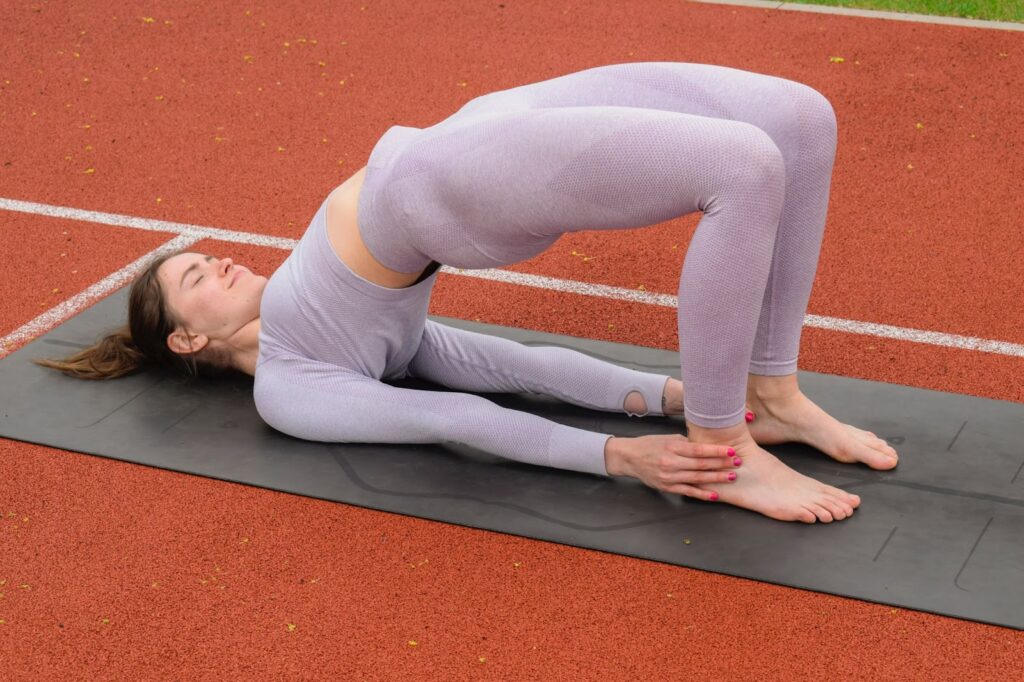
Third eye chakra yoga poses
The third eye chakra (Ajna chakra in Sanskrit) sits between the eyebrows and is responsible for our imagination and intuition. In addition, the chakra governs vision, so it is associated with the eyes and the pituitary gland.
If your third eye chakra is open, you’ll be able to connect to your inner guidance through your intuition. Your mind will also be clear enough to see signs from the universe. However, if the sixth chakra is closed, you’ll be too attached to the external world and may experience headaches and vision problems.
To open your third eye chakra, incorporate poses that apply pressure to the forehead or involve breathwork or meditation.
Balasana (Child’s Pose) – This gentle position compresses the forehead and stimulates the third eye chakra, sending life force energy here. It also has meditative qualities, helping you turn your attention inwards.Uttanasana (Standing Forward Bend) – This replenishing posture releases tension from the entire spine, and the inverted position moves the energy upward to the brain, flooding it with fresh energy. Vajrasana (Thunderbolt Pose) – This meditative position can be profound for the sixth chakra if you focus on the space between the eyebrows, visualizing energy here while holding the pose. Uttana Shishosana (Puppy Pose) – By resting your forehead on the ground or a block, the third eye is stimulated similarly to Balasana. This posture simultaneously targets the heart chakra as it opens the chest and shoulders.Viparita Karani (Legs up the wall) – This nourishing and introspective position promotes insight and spiritual connection. In addition, it eases headaches and mental tension as it brings fresh oxygen to the brain.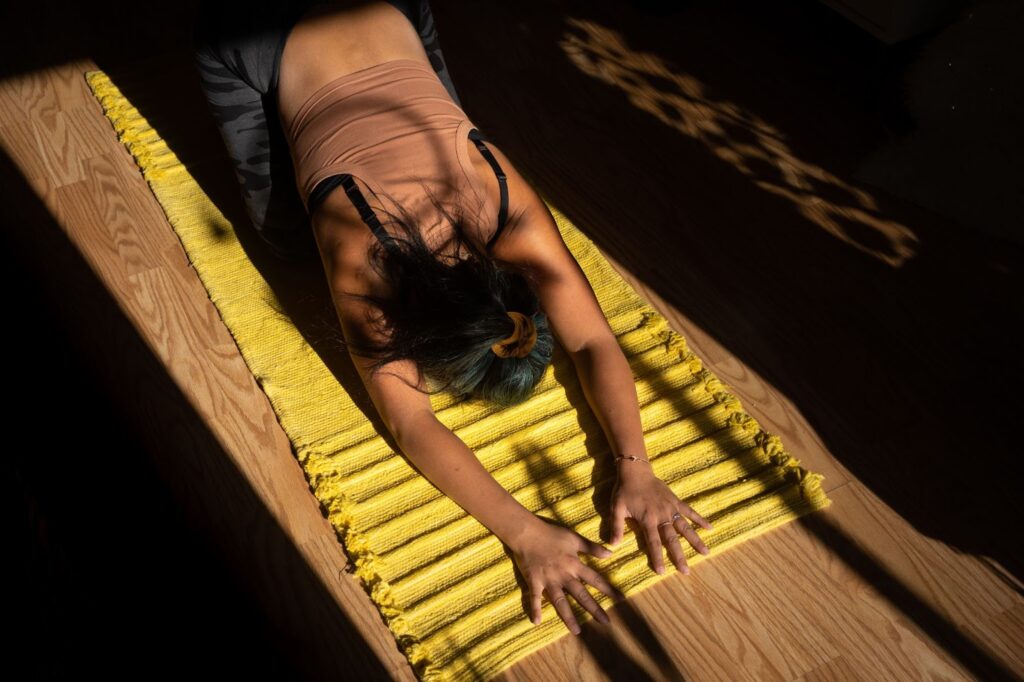
Crown chakra yoga poses
The crown chakra (Sahasrara in Sanskrit) sits just above the top of the head and is associated with a connection to the divine and universal consciousness.
If the crown chakra is open, you’ll feel connected to all living beings and experience eternal peace and joy. However, if closed, you’ll see yourself separate from all other beings and possess the negative qualities of narrow-mindedness and stubbornness. It’s also possible for the crown chakra to be overactive. In this case, you may feel too disconnected from the physical body.
The seventh chakra is primarily linked to the brain and nervous system. However, as it is connected to all the other chakras, it can affect all organs and bodily systems. Meditative and reflective yoga postures help to open the crown chakra. Inversions are also beneficial as they promote blood flow to the head and stimulate the pineal gland, one of the endocrine glands connected to the crown chakra.
Savasana (Corpse Pose) – This pose is performed at the end of the class when the mind is calm and clear enough to enter a meditative state. Padmasana (Lotus Position) – This seated meditation position calms your mind and brings you into a reflective mindset. You also use Jnana Mudra in this position to invoke clear communication with the divine.Sirsasana (Headstand) – This inversion turns the body upside down, sending blood and energy to the top of the head. Furthermore, the crown chakra connects with the ground with a slight compression to stimulate this energetic center further. Sasakasana (Rabbit Pose) – This deep forward fold connects the top of the head to the earth, stimulating the crown chakra and releasing mental tension.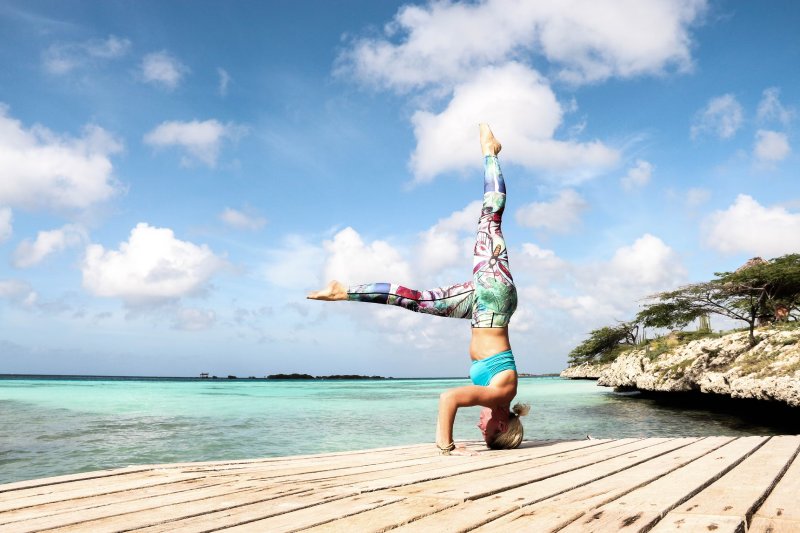
Combining meditation and pranayama with chakra yoga
Yoga practice does not only involve physical postures but also meditation and breathing exercises. Incorporating all three into your routine will increase life force creation, allowing you to direct more subtle energy to each chakra.
I recommend starting your practice with some pranayama to calm and clear the mind. Pranayama balances the two brain hemispheres and cleanses the Nadis (the energy channels that run through the chakras), creating a smoother energy flow through the subtle body.
You can then incorporate meditation in every chakra yoga pose. Hold each one for up to one minute, focusing on your breathing as you do. Alternatively, you can focus your attention on the targeted chakra, visualizing the energy present here.
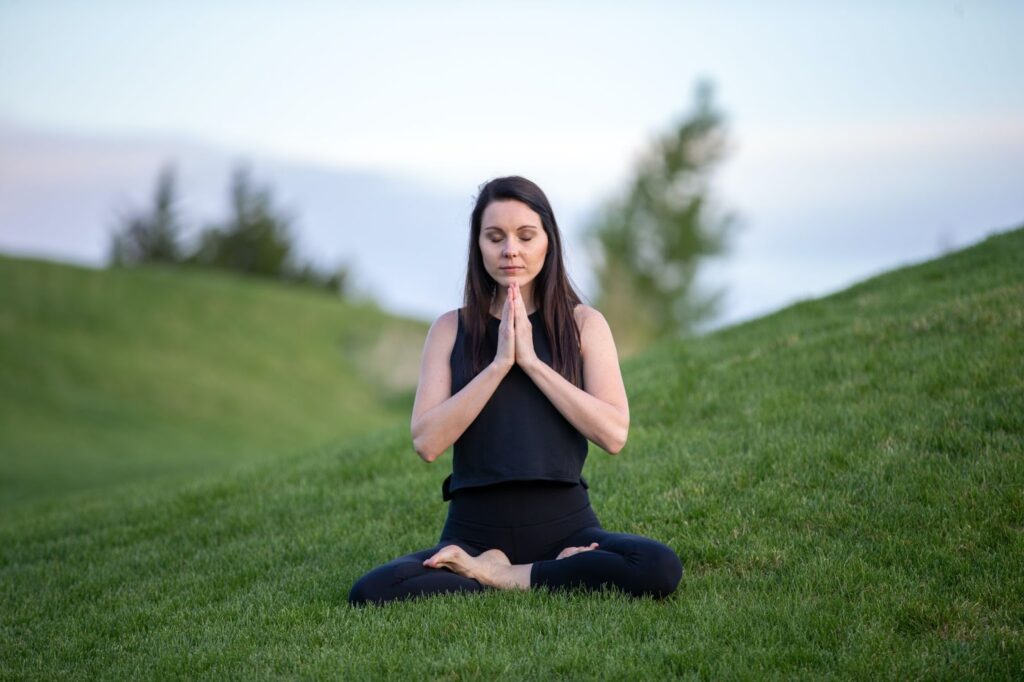
Final thoughts on chakra yoga
As a yoga practitioner, having some chakra knowledge will help you go deeper in your spiritual practice and promote health and healing to your physical and subtle bodies. And as you know, yoga goes much deeper than the muscles. So, by working with the chakras, you can connect to yourself and the universe on a much more profound level.

 JimMin
JimMin 
































